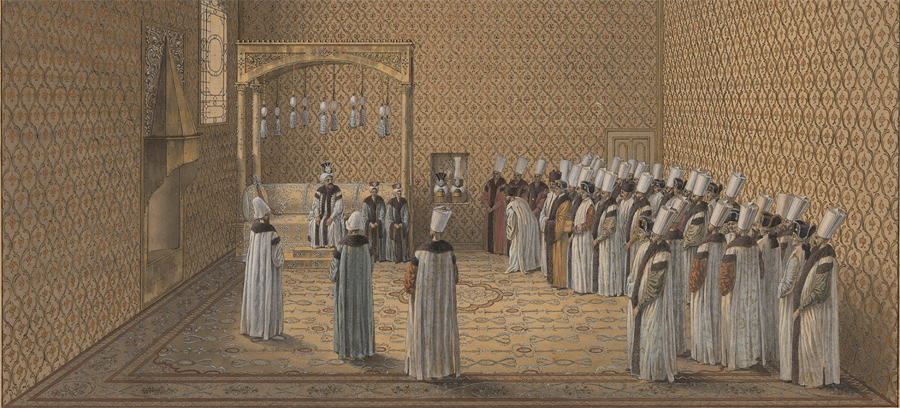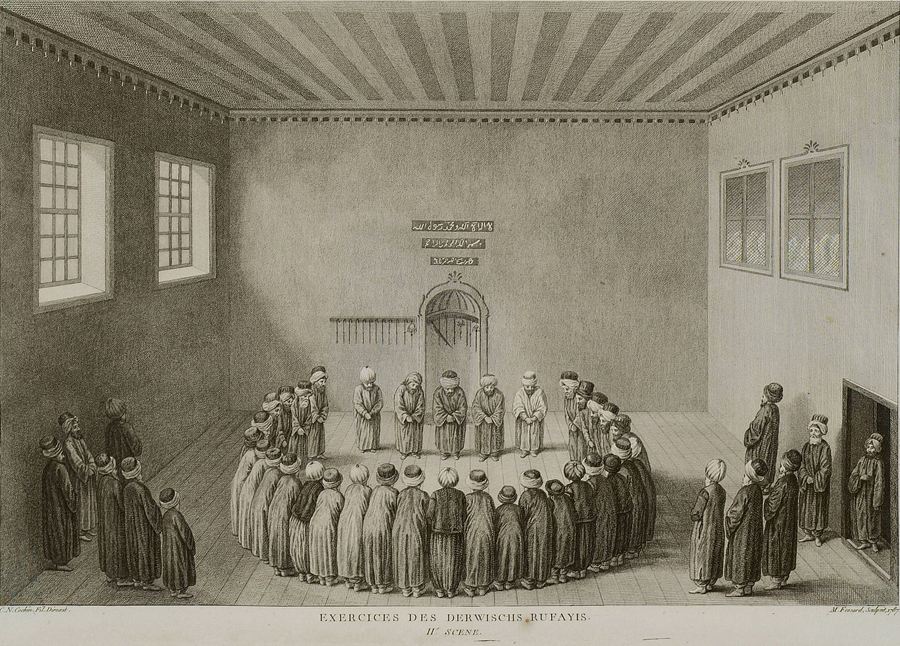
The Interviewees

Interview with Carter V. Findley - January 2023
1- Mouradgea d’Ohsson wasn’t the first illustrator of Ottoman scenes and ceremonies. Would you describe his output, in collaboration with his artist collaborators, as one of the most vivid and wide-ranging that made him unique for the 18th century?
Unique for the Enlightenment, Mouradgea’s 233 engravings, including 41 large scenes, constitute the richest trove of visual documentation on the Ottoman Empire for the eighteenth century. The nearest comparisons would be the Surname of Levni (1720s) and Melling (1819), who actually has far fewer engravings.
2- By the 1780s Sweden was no longer the great power it used to be before the disastrous defeat of Charles XII at Poltava against the Russians; yet they still partly sponsored the project of Mouradgea d’Ohsson, who clearly had the skills and local connections to do justice to such an ambitious publication. Was the trajectory of this book set back post the Poltava defeat and Sweden’s continuing desire to be in the ‘league of nations’ of the time?
Far from set back by Poltava, d’Ohsson’s project was set in motion by Swedish reactions to Poltava. Charles XII’s five years as a “house guest” of the Ottomans at Bender (1709-1714), with his large entourage, kicked off the efforts to compile all useful information about the Ottomans that only bore fruit 75 years later with d’Ohsson’s publication. The Swedes’ loss of great-power status made them realize how much Russia’s westward expansion threatened Sweden, Poland, and the Ottoman Empire: thence the strategic imperative to know more about Islam and the empire.
3- Was this book ground-breaking at the time? Were there any publications before that dealt with the taxonomy of Ottoman law and government in even summary form?
D’Ohsson did not use these other European works as sources, and that required me to concentrate my research elsewhere, on the sources he did use. In that sense, I am not the best person to answer this question. I have not studied it closely, but Rycaut’s State of the Ottoman Empire (1668), did anticipate Mouradgea’s approach, as its title implies. To my mind, Luigi Marsigli’s Stato Militare dell’ Imperio Ottomano (1732) provides an earlier exemplar for has Mouradgea’s combination of taxonomic organization and profuse illustrations.
4- Would you consider this work to be partly political, even if it was not intended to be, in that d'Ohsson projected the impression that Islamic Ottoman law was highly codified and therefore the Empire was not despotic and was thus a useful bulwark against expansionist Russia?
The hardest research problem that I faced was figuring out what d’Ohsson meant in arguing that Islamic law was codified. The last problem I solved, this launched me on an open-ended foray that ultimately took shape as an essay in comparative legal history at the beginning of chapter 6 in my book. During the years Mouradgea worked on his book, he must have known all along that his researches had practical uses for his Swedish patrons. But the relevant political horizons clearly shifted over time, particularly after he went to Paris. Ultimately his work had political value for four different audiences: the pro-Ottoman faction at Versailles, the wider République des lettres, the Swedes, and the Ottoman reformers supporting Sultan Selim III (r. 1789-1807).
5- The last part of d’Ohsson’s Tableau was not published until 1820 by his son after his death. Did this adversely affect the longevity of his work as a source on Islam and the Ottomans. Had the French Revolution dented the relevance of this publication in that country as it was convulsed in internal strife?
The French Revolution was extremely harmful, interrupting publication of d’Ohsson’s work for 30 years and in killing off a lot of potential subscribers to his deluxe folio edition. D’Ohsson lost a fortune on his engravings and had no chance of regaining it from sales of the folios.
In the world of knowledge, there was also an epistemic shift going on. Great taxonomic works were the cutting edge of knowledge production during the Enlightenment. By 1820, this method had slipped into obsolescence, although obviously many such works remained in use. D’Ohsson retained his pertinence as a source on the current state of things until the pace of Ottoman reform accelerated with the destruction of the Janissaries (1826) and especially the Tanzimat (1839).
D’Ohsson was a work of what the Germans called Statistik, practical knowledge about affairs of state, not yet understood in exclusively quantitative terms. I believe d’Ohsson was cited in parliamentary papers as late as about 1840.
6- Do the illustrations also provide unique insight into the architecture and layout of buildings such as the Saadabad Palace of Kağithane and the Beşiktaş Shore palace that no longer stand?
Art historian Günsel Renda has pointed out exactly that for structures in Istanbul. D’Ohsson’s bird’s eye view of Mecca probably merits study for similar reasons. The 64 sites numbered and identified in the legend below the engraving include many shrines and tombs that were probably destroyed by the Wahhabis after they got control of Mecca in 1803.
7- What are you working on right now?
A History of the Ottoman Empire.
Engraved: Final Plate (233) in volume three of Mouradgea d’Ohsson’s ”Tableau general de l’Empire Othoman” (1820) with the title ”Audience d’un ministre europeen”.
Interview conducted by Craig Encer


